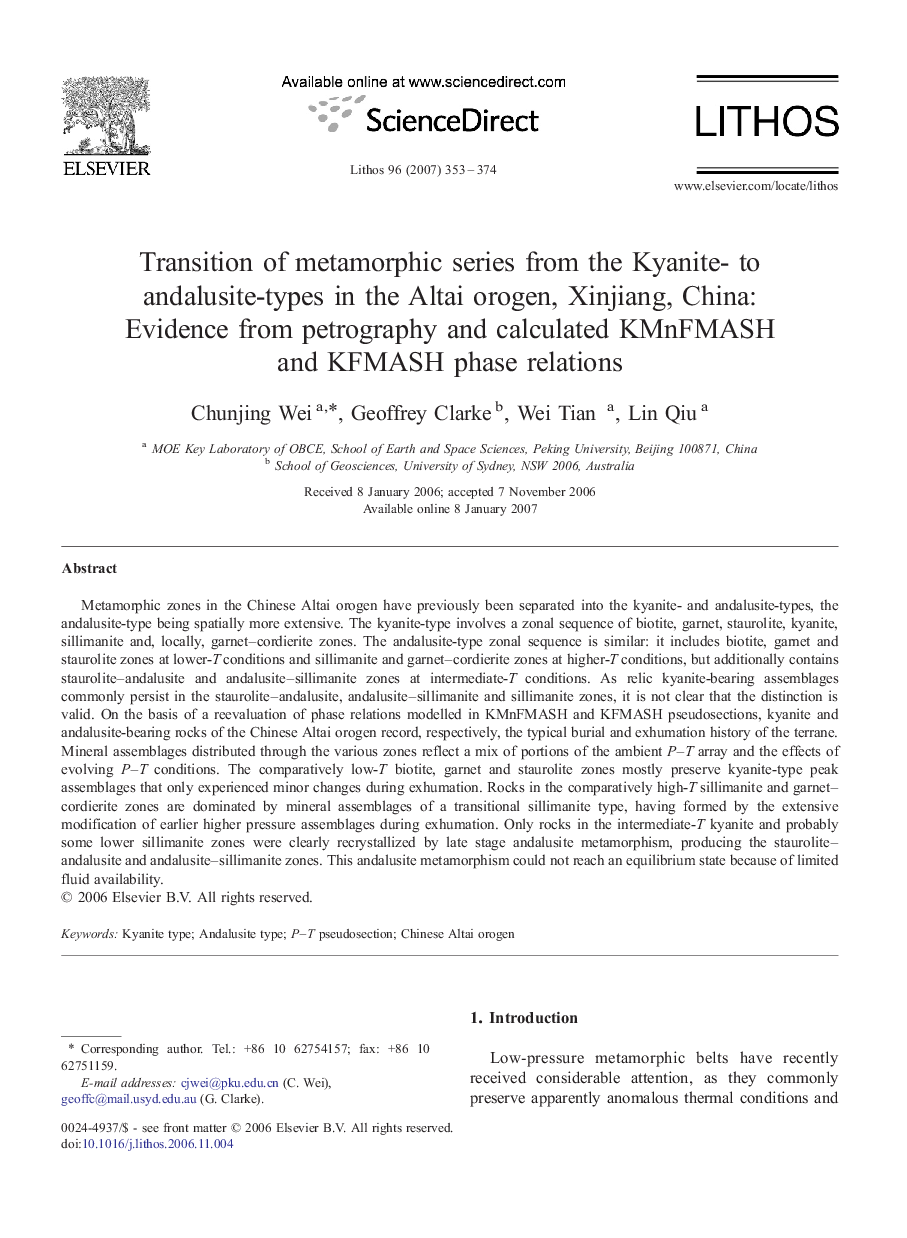| کد مقاله | کد نشریه | سال انتشار | مقاله انگلیسی | نسخه تمام متن |
|---|---|---|---|---|
| 4717827 | 1638767 | 2007 | 22 صفحه PDF | دانلود رایگان |

Metamorphic zones in the Chinese Altai orogen have previously been separated into the kyanite- and andalusite-types, the andalusite-type being spatially more extensive. The kyanite-type involves a zonal sequence of biotite, garnet, staurolite, kyanite, sillimanite and, locally, garnet–cordierite zones. The andalusite-type zonal sequence is similar: it includes biotite, garnet and staurolite zones at lower-T conditions and sillimanite and garnet–cordierite zones at higher-T conditions, but additionally contains staurolite–andalusite and andalusite–sillimanite zones at intermediate-T conditions. As relic kyanite-bearing assemblages commonly persist in the staurolite–andalusite, andalusite–sillimanite and sillimanite zones, it is not clear that the distinction is valid. On the basis of a reevaluation of phase relations modelled in KMnFMASH and KFMASH pseudosections, kyanite and andalusite-bearing rocks of the Chinese Altai orogen record, respectively, the typical burial and exhumation history of the terrane. Mineral assemblages distributed through the various zones reflect a mix of portions of the ambient P–T array and the effects of evolving P–T conditions. The comparatively low-T biotite, garnet and staurolite zones mostly preserve kyanite-type peak assemblages that only experienced minor changes during exhumation. Rocks in the comparatively high-T sillimanite and garnet–cordierite zones are dominated by mineral assemblages of a transitional sillimanite type, having formed by the extensive modification of earlier higher pressure assemblages during exhumation. Only rocks in the intermediate-T kyanite and probably some lower sillimanite zones were clearly recrystallized by late stage andalusite metamorphism, producing the staurolite–andalusite and andalusite–sillimanite zones. This andalusite metamorphism could not reach an equilibrium state because of limited fluid availability.
Journal: Lithos - Volume 96, Issues 3–4, July 2007, Pages 353–374